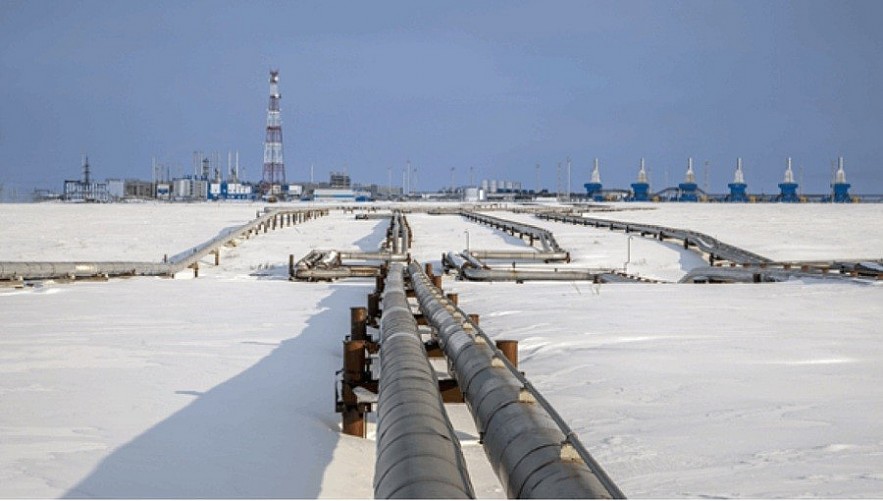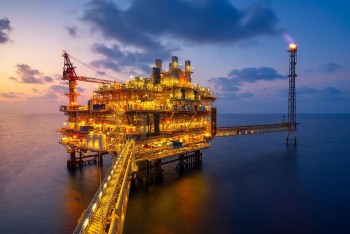These 8 Countries Have the Most Oil/Gas Fields of The World
| Table of Contents |
Oil and gas exploitation: Overview
As the world's primary fuel sources, oil and natural gas are major industries in the energy market and have a significant impact on the global economy. Oil and gas production and distribution processes and systems are highly complex, capital-intensive, and require cutting-edge technology.
The processes and methods involved in locating potential sites for oil and gas drilling and extraction are referred to as oil and gas exploration. Early oil and gas explorers used surface indicators like natural oil seeps, but advances in science and technology have increased the effectiveness of oil and gas exploration.
Exploration is a high-risk, high-cost endeavor that primarily involves corporate funds. The cost of an unsuccessful exploration, such as seismic studies and drilling a dry well, can be high.
How many countries in the world own oil and gas fields?
According to GlobalData, Energy Monitor's parent company, 47 countries are planning new oil and gas fields. The term "planned" in this context means that they have already received final investment decisions (FID) to develop and that real-world work has begun to begin extraction.
Learn more: Top 12 Largest Oil and Energy Companies in the U.S
 |
| Top Countries Having The Most Oil And Gas Fields In The World |
Top 8 Countries Having The Most Oil And Gas Fields In The World
Let's explore which country has the highest number of oil and natural gas field and how much they own.
1. Russia (Reserve: 25 fields with 20.5bboe)
Russia has oil and gas production facilities all over the country, but the majority of them are in western and eastern Siberia. Russia is expected to export 4.7 million barrels per day of crude to countries around the world in 2021.
Russia produces a variety of crude oils, but its main export blend is Urals, a medium sour crude. It also exports significant amounts of ESPO blend crude crude to Asia via the East Siberia-Pacific Ocean (ESPO) pipeline. Siberian light, Sokol, Sakhalin blend, Arctic oil, and Novy Port are some of the other grades.
Despite the fact that the Russian oil industry has been consolidating in recent years, several major players remain. Rosneft, a state-owned company, is Russia's largest oil producer. It is then followed by LUKOIL, which is the largest privately owned oil company in the country. Gazprom Neft, Surgutneftegaz, Tatneft and Russneft also have significant production and refining assets.
Russia is the world's second-largest natural gas producer, trailing only the United States, and has the world's largest gas reserves. Russia is the world's largest exporter of natural gas. In 2021, the country produced 762 billion cubic meters of natural gas and exported approximately 210 billion cubic meters via pipeline.
READ MORE: 17 Little-Known Facts About Russia
2. Brazil (18 fields with 8.7bboe)
Brazil is South America's largest oil producer, the eighth largest global oil producer, the eighth largest oil consumer, and the world's largest recoverable ultra-deep oil reserves. Brazil's oil production is primarily offshore (96.7 percent), with Petrobras accounting for 73 percent of total oil and gas production. For many years, the oil and gas industry accounted for the majority of investments in the Brazilian economy, accounting for roughly 10% of the country's GDP.
3. Norway (14 fields with 22bboe)
Norway is Europe's largest producer of oil and gas, despite having only five million people and vast oil and gas reserves in the North Sea. Since Russia's invasion of Ukraine, it has also become the EU's top natural gas supplier.
Despite being one of the wealthiest countries in the world, with the world's second-largest sovereign wealth fund, Norway has no plans to phase out oil and gas extraction. Instead, between 2012 and 2022, the country issued as many exploration licenses as it had since it began extracting oil in 1965. One of the country's planned oil fields, Johan Castberg, is located in the Barents Sea, far north of the Arctic Circle, rather than the North Sea.
4. US (13 fields with 2.9bboe)
The United States ranks fourth on the list, as the world's wealthiest country in nominal GDP terms, as well as the world's largest oil and gas consumer. New shale gas extraction in the Permian Basin has also allowed the country to surpass Saudi Arabia and Russia to become the world's largest oil and gas producer since the 2010s.
Despite introducing a far more climate-friendly policy agenda than his predecessor, Donald Trump, President Joe Biden's administration has continued to issue new oil and gas exploration and extraction licenses. The decision to allow ConocoPhillips to start extracting oil from the Willow Project in Arctic Alaska most recently outraged US climate activists.
5. India (11 fields with 0.4bboe)
Although India is developing 11 fields, they contain relatively little oil and gas. The country's extraction is primarily for domestic consumption: it is currently the world's second-largest importer of oil, importing hydrocarbons to fuel its rapidly expanding economy. The majority of the country's oil and gas reserves are located offshore.
According to the most recent data, India's oil production fell by 4% and gas production fell by 3% in the year to April 2023. The country has extremely ambitious renewable energy targets, aiming to install 500GW by 2030.
6. Australia (9 fields with 1.8bboe)
Australia surpassed Qatar as the world's largest LNG exporter at the end of last year, and now even more companies are investing in infrastructure throughout the region to turn Western Australia into a global LNG hub.
New projects are creating new jobs and driving market growth across the entire Australian oil and gas industry. To highlight the most promising opportunities across the country, we examined the ten most significant upcoming developments set to open within the next five years.
7. China (9 fields with 1.5bboe)
China is the world's second-largest oil consumer after the United States, and the world's third-largest gas consumer after Russia and the United States. In 2016, China surpassed the United States as the world's largest oil importer. The majority of the oil and gas extracted and planned to be extracted in China's nine upcoming fields is for domestic consumption.
Many sources predict that China will have record oil imports in 2023; thus, in addition to developing nine new fields, Chinese state oil companies have extensive oil and gas exploration programs. This year, China National Offshore Oil Corporation discovered a "major" new oil field in the Bohai Sea, which runs along China's northern coast, with an estimated 100 million tonnes (680 million barrels) of oil.
8. Malaysia (9 fields with 1.8bboe)
Malaysia has the fourth-largest oil reserves in the Asia-Pacific region, trailing only China, India, and Vietnam, and the third-largest natural gas reserves, trailing only China and Indonesia. After electronic goods and chemicals, petroleum and natural gas are Malaysia's third and fourth most important exports.
Despite being one of the few global economies to successfully industrialize in the latter half of the twentieth century, oil and gas remain a critical economic priority. More hydrocarbon volumes were discovered in Malaysia during exploration rounds between 2020 and 2022 than in the rest of South-East Asia combined.
Top 5 Biggest Oil Producing Countries In The World
1. United States
Production: 20,213,000 bpd
2. Saudi Arabia
Production: 12,144,000 bpd
3. Russia
Production: 10,938,000 bpd
4. Canada
Production: 5,694,000 bpd
5. China
Production: 5,119,000 bpd
Top 5 Biggest Natural Gas Producing Countries In The World
1. United States
Production: 1.027 trillion cubic meters
2. Russia
Production: 699 billion cubic meters
3. Iran
Production: 244 billion cubic meters
4. China
Production: 219 billion cubic meters
5. Canada
Production: 205 billion cubic meters
Bottom Line
The International Energy Agency (IEA) published its Net Zero by 2050 analysis in 2021, revealing how difficult the energy transition would be.Countries with significant oil and gas industries, as well as the majority of the rest of the world, are continuing to move in the opposite direction.
 Top 10 Largest Oil and Gas Companies in the World Top 10 Largest Oil and Gas Companies in the World Let’s take a look at the list of the top ten highest-earning oil and gas companies, according to Market Cap. |
 How To Find the Best Oil Rig Injury Lawyers in the U.S How To Find the Best Oil Rig Injury Lawyers in the U.S In the event of an oil rig accident in the United States, it is essential to consult with qualified legal counsel. |
 Top 10+ Largest Oil and Energy Companies In The U.S Top 10+ Largest Oil and Energy Companies In The U.S Oil and energy companies are expanding rapidly around the world. Because various oil companies in America contribute to this growth index, the Oil Companies in ... |
























